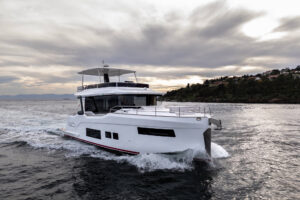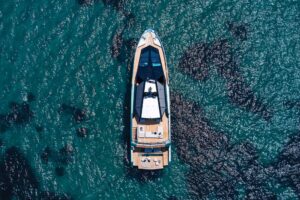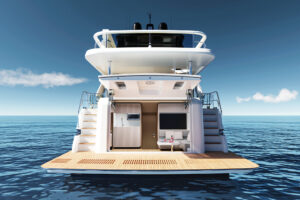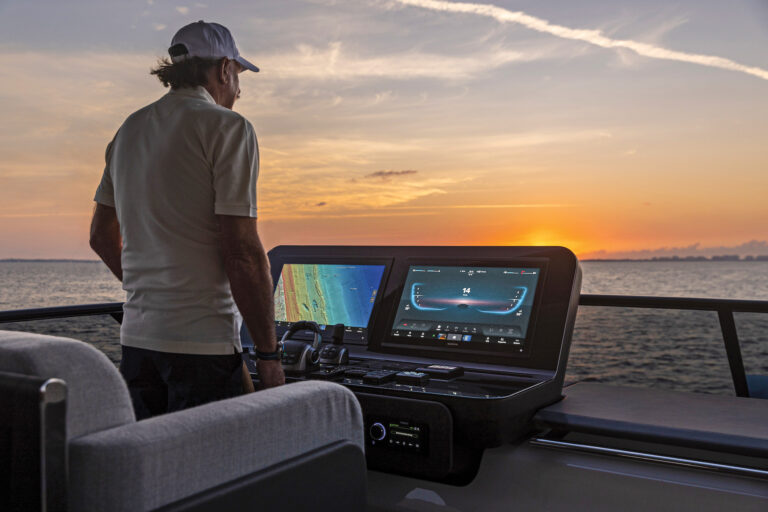
Philippe Briand is among the world’s most celebrated yacht designers, known for his work with Perini Navi, Turquoise, Admiral and more. He pushes the bounds of innovation, most recently last year, when he unveiled a Flyacht concept for two-person sailing, based on the AC75 class of America’s Cup foiling designs. His latest motoryacht to launch is the 190-foot Feadship Najiba — the second-largest aluminum yacht in the Dutch yard’s history, reportedly capable of cruising at 12 knots while burning just 3 gallons of fuel per nautical mile. (And, no, none of those numbers are typos.)
Following are edited excerpts of Briand’s conversation with Yachting before Najiba was delivered. He spoke about his Vitruvius Yachts brand, which is known for yachts that have 15 or 20 percent lower fuel consumption than traditional-propulsion vessels, and about the future of eco-friendly yachting.
Najiba is the fifth Vitruvius yacht to launch and the first Vitruvius that Feadship has built. How did the yacht evolve from your previous designs?
This is only our second boat in aluminum. The first was [the 164-foot Picchiotti] Exuma. And of course, aluminum is a material that we like. It makes the boat lighter. With this boat, there is an evolution in the design. In the custom design business, the requirements are never the same from one client to another. This client wanted more room and accommodations than we’ve previously done on an explorer or expedition boat.
Did Najiba’s owners also insist on low fuel consumption?
It was part of the requirements. Maybe not one of the main ones, but now, it’s part of all the specs we get. We live in a world where people care about protecting the environment.
Two of those people are you and Feadship’s Henk de Vries, who were among the founders of the Water Revolution Foundation in fall 2018. Did the Najiba project have anything to do with the foundation’s goals of driving sustainability in the superyacht industry?
It’s one of the reasons why we did the boat together. We share the same values and have the same vision. We want to see an evolution of the product and design in our industry.
What progress has the foundation made so far?
We are at the beginning. When we look at the past experiences in this field, there are a lot of intentions and new organizations for water protection, but not so many actions. I really care about this, and to be sure, things are going to move. As a new foundation, we are looking for partners and sponsors. We are confident we are going to find it within the industry.
What do you see as the future of fuel-efficient yachting?
There is no mystery about that. There already are some benchmarks. In commercial shipping, there is a target to reduce carbon emissions substantially by 2030. Cruise liners, they are now switching from fuel to gas as their energy source. I think that yachting needs to follow this path, at minimal, and possibly more because we are a kind of laboratory. All of our boats, especially the custom yachts, are more or less prototypes. We can be a testing lab for new technologies. The target is very clear: We need to diminish our emissions throughout the world, and that means in the yachting industry too.
Your goal with Najiba was to design a visually interesting boat while setting a new fuel-efficiency standard in her size range. Do you believe yachtsmen will have to compromise on aesthetics to achieve more eco-friendly vessels?
What’s important to me is that we look at the big picture. We want to design beautiful, ecological boats. A beautiful plan is an efficient plan. They go together.









